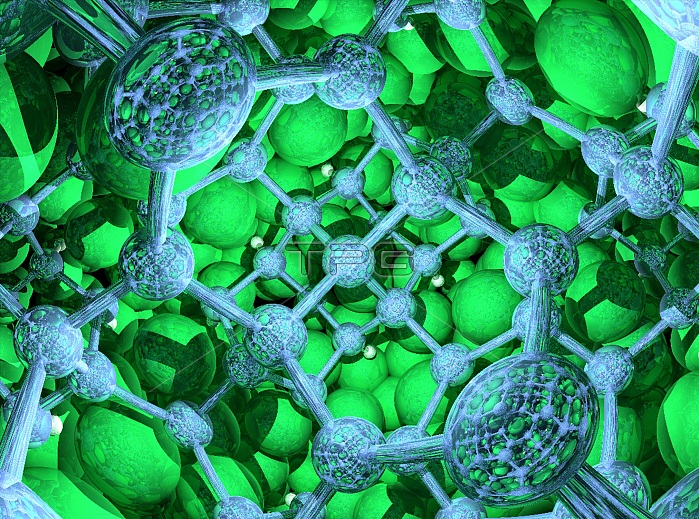
Argonne scientists are interested in what happens when they squeeze nanoparticles that are very, very small - on the scale of a thousand times smaller than a red blood cell. In a computer simulation, a silicon nanoparticle (blue atoms) is being squeezed by a sea of argon (green) atoms. These calculations, along with experiments, both show changes in the way light is emitted when a silicon nanoparticle is squeezed. Silicon is a chemical element with symbol Si and atomic number 14. It is a tetravalent metalloid and the 8th most common element in the universe by mass, but very rarely occurs as the pure free element in nature. Nanoparticles are particles between 1 and 100 nanometers in size. In nanotechnology, a particle is defined as a small object that behaves as a whole unit with respect to its transport and properties. Particles are further classified according to diameter. Nanoparticle research is currently an area of intense scientific interest due to a wide variety of potential applications in biomedical, optical and electronic fields. Nanotechnology (nanotech) is the manipulation of matter on an atomic, molecular, and supramolecular scale.
| px | px | dpi | = | cm | x | cm | = | MB |
Details
Creative#:
TOP22302273
Source:
達志影像
Authorization Type:
RM
Release Information:
須由TPG 完整授權
Model Release:
N/A
Property Release:
No
Right to Privacy:
No
Same folder images:

 Loading
Loading